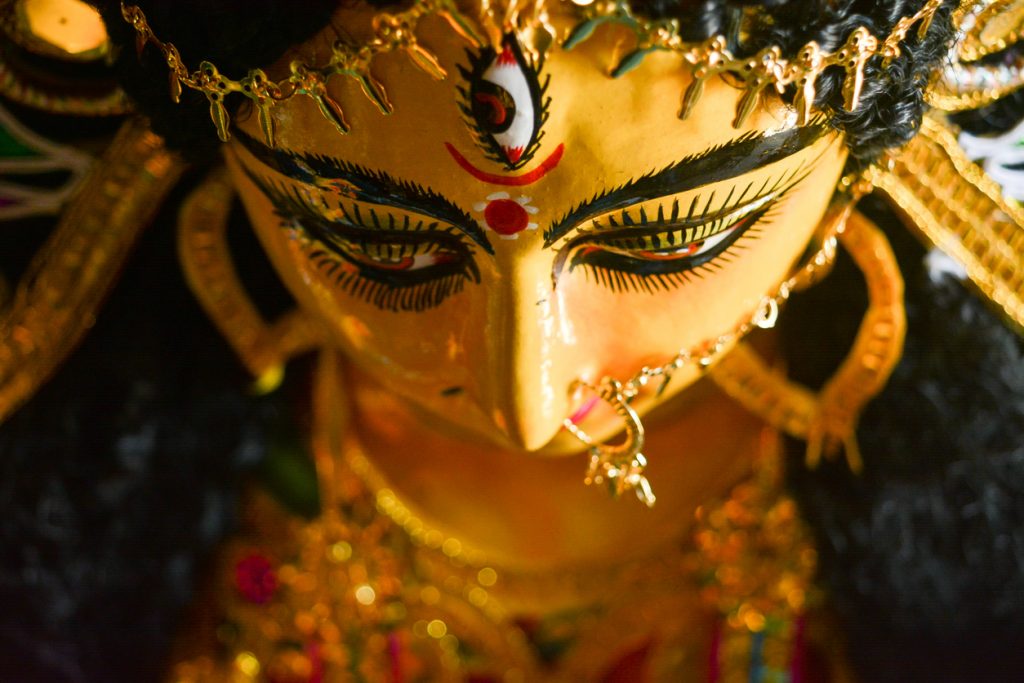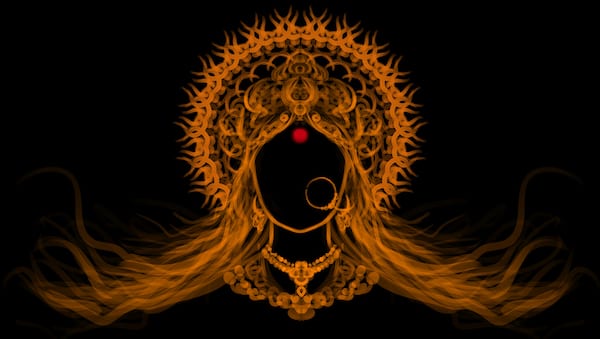
या देवी सर्वभूतेषु विष्णुमायेति शब्दिता । नमस्तस्यै नमस्तस्यै नमस्तस्यै नमो नमः ॥
yā devī sarvabhūteṣu viṣṇumāyeti śabditā ।namastasyai namastasyai namastasyai namo namaḥ ॥
Today is the new year, the beginning of विक्रम संवत् (Vikram Samvat) 2078.
And the beginning of Vasanta Navratri.
I had written a whole series on Navratri, the first post of which I have reproduced below. This Navratri too, try to read through the whole series and follow it for these nine days.
Yesterday, I spoke of new beginnings.
Today, is the new beginning.
The Hindu calendar, isn’t actually just one calendar. There are many ways of keeping time, and ancient Indians kept time in ways that boggles the mind. A topic for a separate article (or series) in itself.
For now, know that today is a new year, one that feels like a new year.
Unlike the Gregorian equivalent, that starts on the cold and barren day of January.
Yet, we celebrate it with pomp and fervor, and one that actually feels like a new beginning, is sidelined.
Well, this one does not call for a resolution. It calls for a resolve.
A resolve to try harder this year, to start again this year, and to not give up this year.
I started writing when the lockdown started over a year back…365 days down the line, a lockdown looms again.
This can be depressing for many – a desperate call for some kind of hope and deliverance.
Here is where you need a strong resolve.
Navratri can be that hope that you look for – but it isn’t external. It is all within you.
And the very occasion of Navratri is a call to look within, like yoga, like meditation…
May this new year be the best for you…and if it isn’t, then don’t despair. Life is cyclical, the next Navratri will be better…or the next…or the next.
Don’t waste time waiting for it though. Use the time in between to try your best to make it happen.
आप सब को नवरात्रि की हार्दिक शुभकामनाएँ!
Happy Navratri!
The number nine holds special significance in our lives. In fact, we begin our journey with the number nine – that is the number of months we spend in our mother’s wombs.
Yog shastras consider the human body to have nine openings through which we interact with the external world – two eyes, two ears, two nostrils, a mouth and the reproductive and excretory organs.
Hindu philosophy counts the universal elements as the पृथ्वी (earth), अप: (water), वायु: (air), अग्नि (fire),आकाश (space), काल (time), आत्मन (soul) and the मनस (mind)…also nine.
Śṛṅgāraḥ (शृङ्गारः): Romance, Love, attractiveness, Hāsyam (हास्यं): Laughter, mirth, comedy, Raudram (रौद्रं): Fury, Kāruṇyam (कारुण्यं): Compassion, mercy, Bībhatsam (बीभत्सं): Disgust, aversion, Bhayānakam (भयानकं): Horror, terror, Veeram (वीरं): Heroism, Adbhutam (अद्भुतं): Wonder, amazement. Śāntam (शान्तम्) Peace or tranquility…these form the Navarasas (the nine emotions).
Indian Jyotisha, or the science of astrology, is based on the नवग्रह (Navagrahas) – or nine cosmic influences (not planets, as is commonly translated). They are सूर्य (Sūrya), चंद्र (Chandra), मंगल (Mangala), बुध (Buddha), बृहस्पति (Brihaspati), शुक्र (Shukra), शनि (Śani), राहु (Rāhu) and केतु (Ketu).
In accordance with the nine cosmic influences, are the navratnās, or nine precious gems, namely heera, panna, manik, neelam, pukhraj, moonga, moti, gomedh and lahsunia.
Hindu philosophy also believes in nine elements comprising the three gunas – sattva, rajas and tamas, the three parts of the karmic cycle – creation, preservation and destruction, and the three factors of time, space and causation.
The number system too, ends in nine, with the rest essentially just repeating the first set.
The Bhagavatapurana mentions nine forms of devotion : sravanam (hearing about God), kirtanam (singing the praise of God), mananam (remembering God), padaseva (serving the feet of God), archanam (worshiping God), mantram (offering prayers to God), seva (serving the cause of God), maitri (friendship with God) and saranam (surrender to God).
And so, it is only natural that one of the biggest celebrations of the year – Navratri, continues for nine days.
But what is Navratri?
You may have grown up learning about the nine forms of Ma Durga, her nine names and stories connected with each name, a lot of names of rākshashas and asurās that she fought with and defeated, the most notorious of them all being Mahishasurā.
While being devout, and worshipping the Goddess with fervor, a doubt must have also crept on in your mind…did these battles actually take place? Some of them do sound pretty incredible, and the daily dose of science that you have grown up on would have come into heavy conflict with these stories.
Whom do you believe? The textbook, or the scripture? The 99.9% that you mopped up in science, or the devotion that your grandmother displayed every single year?
If you have been afraid to question, it is not the Devi’s fault. She has an open classroom…it is you who didn’t raise your hand and ask it. And the beauty of Sanatana Dharma is – the whole movement is full of questions. When Sri Krishna started speaking the Bhagavad Gita, he did not stop at the first question. Arjuna kept asking, Sri Krishna kept replying. And the result is there for all to see.
And so, don’t be afraid of questions. The divine isn’t afraid of questions, the cosmic force is not going to stop, change direction, or get annoyed just because one in 7 billion asked a simple question. Go ahead, seek the answers, and you will only find yourself enriched.
This is what I plan to do as well, for these nine days – ask questions. From myself, from the divine, and from all what’s written on the nine forms of Ma Durga. I seek answers through introspection, I seek answers through meditation and I seek answers through self-purification. Nine days of fasting and prayer, and nine days of questions.

The essence of Navaratri is change. From one season to another. From one mindset to another.
Change of seasons in a year is directly connected to both the Equinoxes and the Solstices. Equinoxes and Solstices are astronomical evens that mark the sun’s apparent movements in the sky.
Summer Solstice marks the time when the sun reaches the highest point in the Northern sky. While winter Solstice marks the movement of the sun to the lowest point in the Southern sky. Equinoxes are the periods when the plane of the Earth’s equator is in line with the center of the Sun’s disk.
There are two Equinoxes in a year — in March and September. Days and nights are generally of equal duration then. The two Solstices occur in June and December. And so, there are four Navratris:
Vasanta Navratri (March-April) — marks the beginning of summer.
Ashadha Navratri (June-July) — marks the beginning of monsoon.
Sharada Navratri (September-October) — marks the beginning of winter.
Pausha/Magha Navratri (January-February) — marks the beginning of autumn.
Of these, the Vasanta Navaratri and Sharada Navaratri are observed and celebrated by the householder and spiritual seekers alike. Ashadaha Navratri and Pausha/Magha Navratri are known as Gupt (Secret) Navratris — these are largely observed by people who perform Tantra Vidya or seek to obtain Siddhis (psychic powers) or the Shaktas (Devotees of Goddess Shakti). Of the four, the Sharada Navratri (also known as Maha Navratri) is considered the most important.
These four periods are the focal points of changes. They mark the end of what is old, spent, harmful and birth of something new. One can also see this as a period of retrospection, rejuvenation and rebirth — on all the three planes: physical, mental & spiritual.
Let us welcome this change. Let us become the change. Let us use this time to realign ourselves to what is truly important. Let us emerge victorious from the Navratri – a new physical, mental and spiritual you. That is what the whole world celebrates as VijayaDashami – the 10th day, but also the first.
जय माँ दुर्गा!
